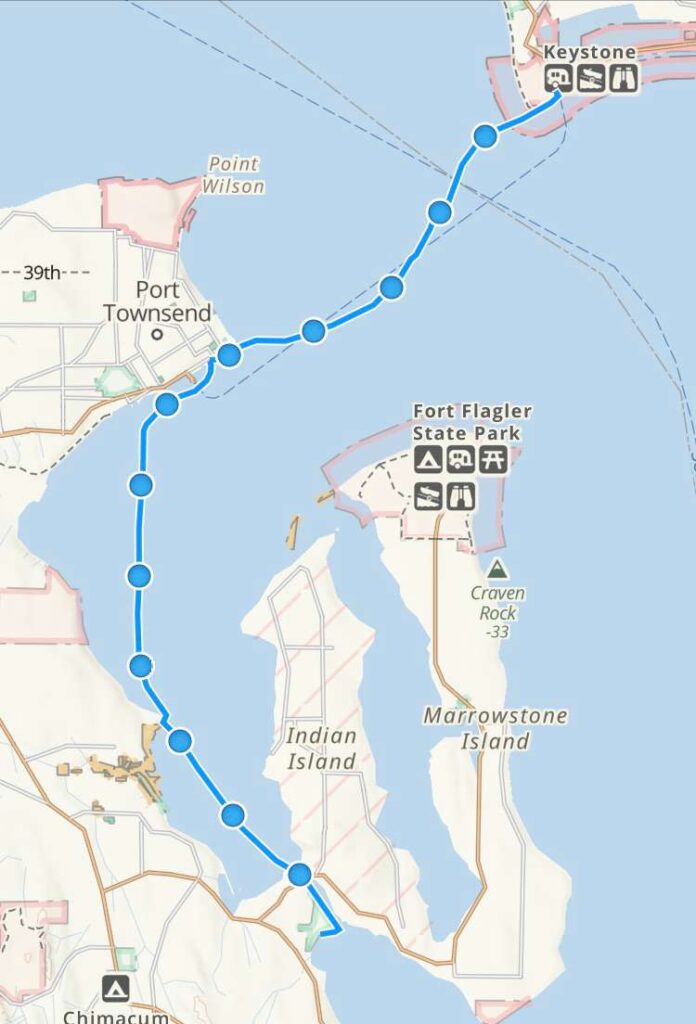
Our trip was nearing its end. Our hope was to get to one of the campgrounds in Hood Canal by the weekend so we could meet up with friends and enjoy some time together. The pandemic made it hard to meet with people indoors, but thankfully the sunny, dry weather of the Pacific Northwest summer made socializing outdoors easy. We wanted to take advantage of this as much as we could before the fall rains and colder temperatures set in. What we didn’t know was that the wildfires that started during the Labor Day storm were growing and their smoke would soon join with smoke from the massive fires in California and Oregon, making all outdoor activities nearly impossible. But that was a few days away. So as we awoke on the morning of September 9, 2020 we were excited to see clear skies and a light breeze for our crossing to Port Townsend.
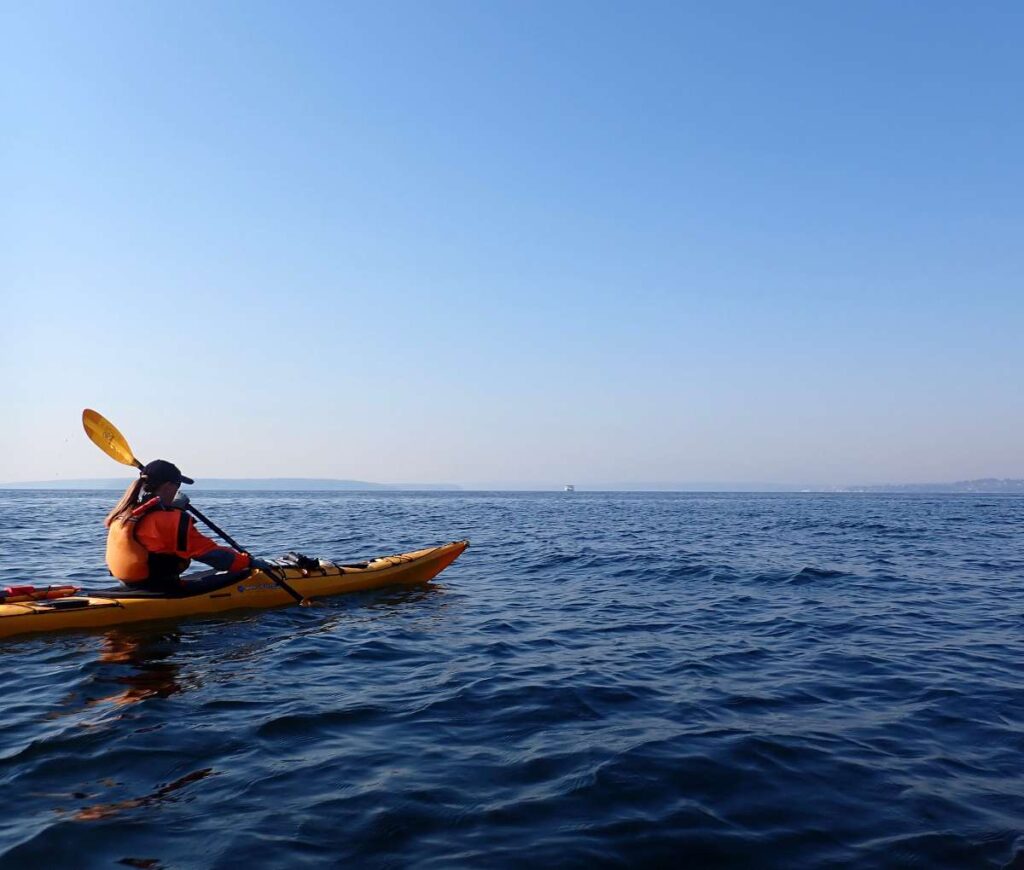
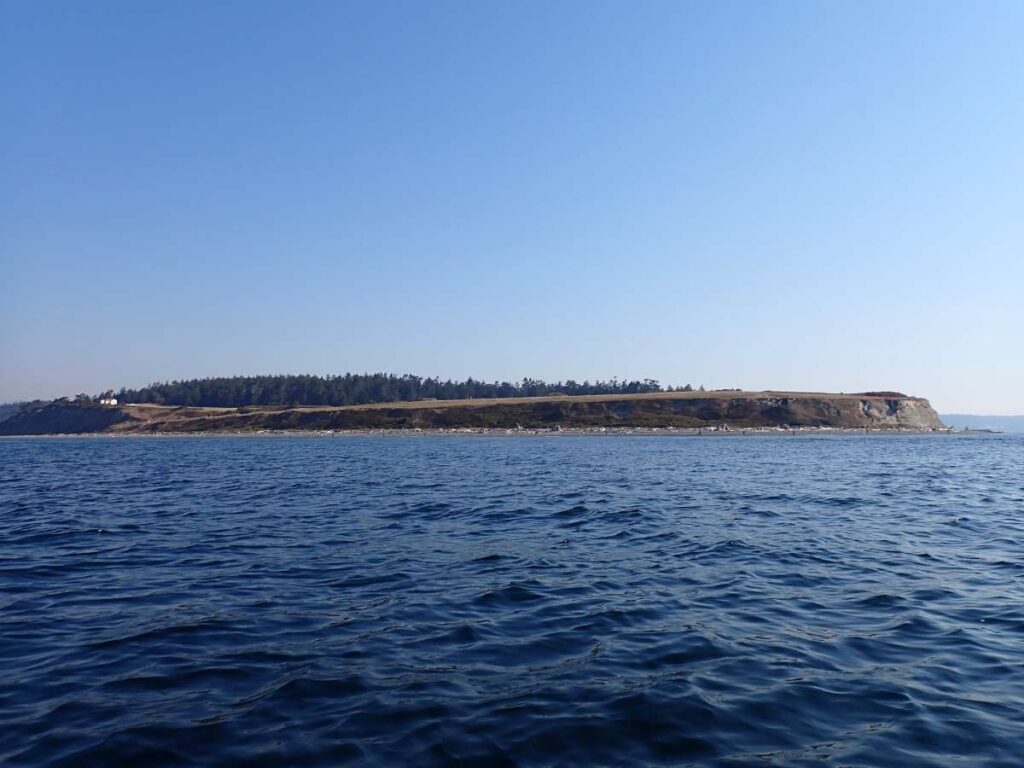
I had never paddled around Port Townsend before. What a lovely waterfront and bucolic little town. Perched right on the edge of the land, backed by high bluffs, Port Townsend feels more like it was born from the sea than constructed by land-dwelling hominids. The piers and docks that line the waterfront are ancient and many are dilapidated and in need of repair, but I think the scruffy look adds to the charm.
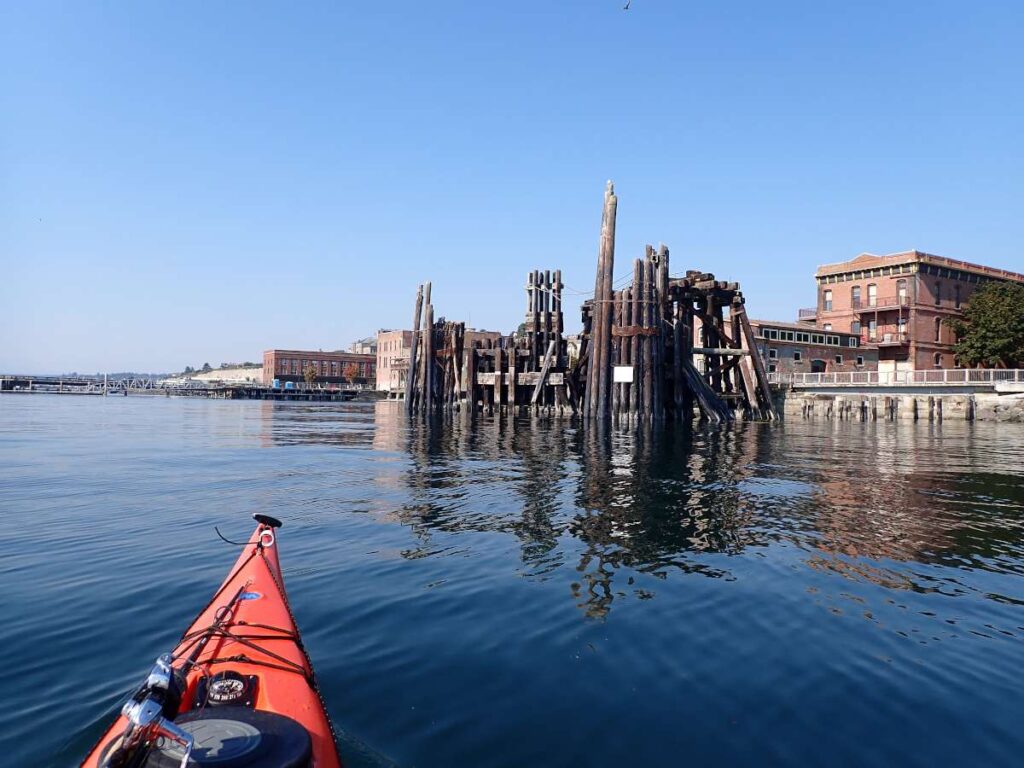
The sun was beginning its descent and the currents would be changing soon. My mom wasn’t looking forward to driving the two hours back to Seattle in rush hour traffic. So we headed back to the kayaks so my folks could see how their son and daughter-in-law had been living for the last month. They smiled. My mom asked if I ever got sore sitting in the kayak. “All the time,” I said. She shook her head.
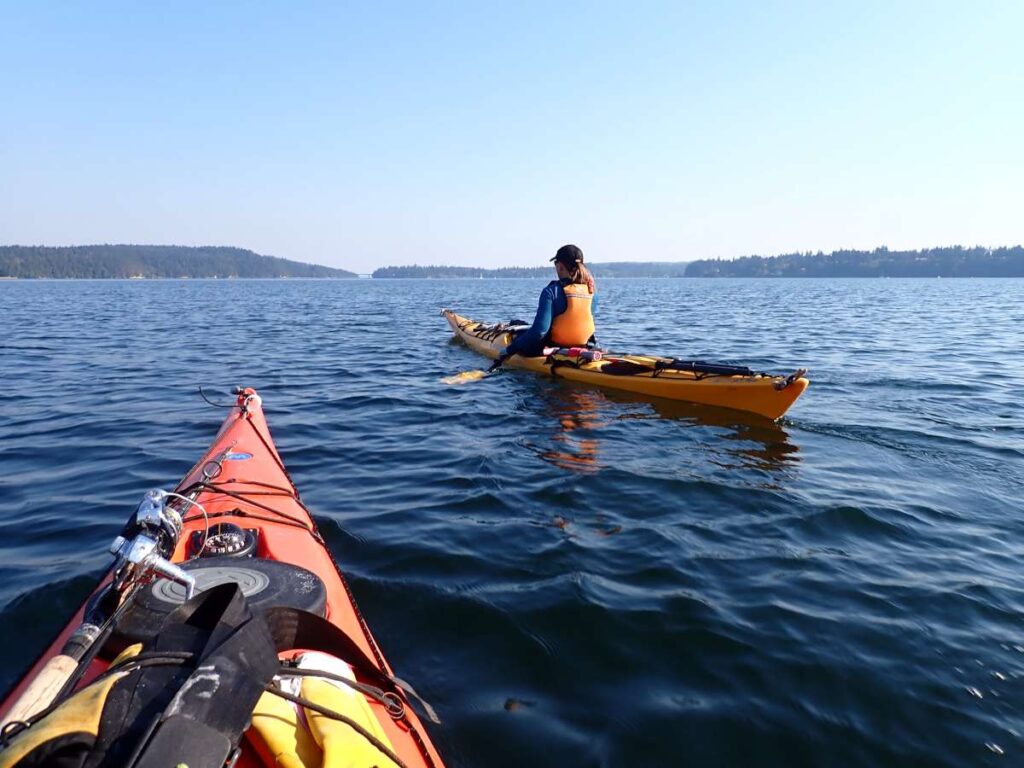
The rest of the day’s paddle wasn’t that long or that challenging, but after a nice meal and good company, I wasn’t feeling particularly inspired to spend another few hours in the kayak. The sun was hot and the air in the sheltered waters of Port Townsend (the body of water) was thick and heavy. Gio and I stopped at Kala Point, just off Kuhn Spit, removed all of our clothes and dunked ourselves in the fifty degree seawater. The shock kick started our hearts and gave us the push we needed for the last leg to Oak Bay where we would spend the night.
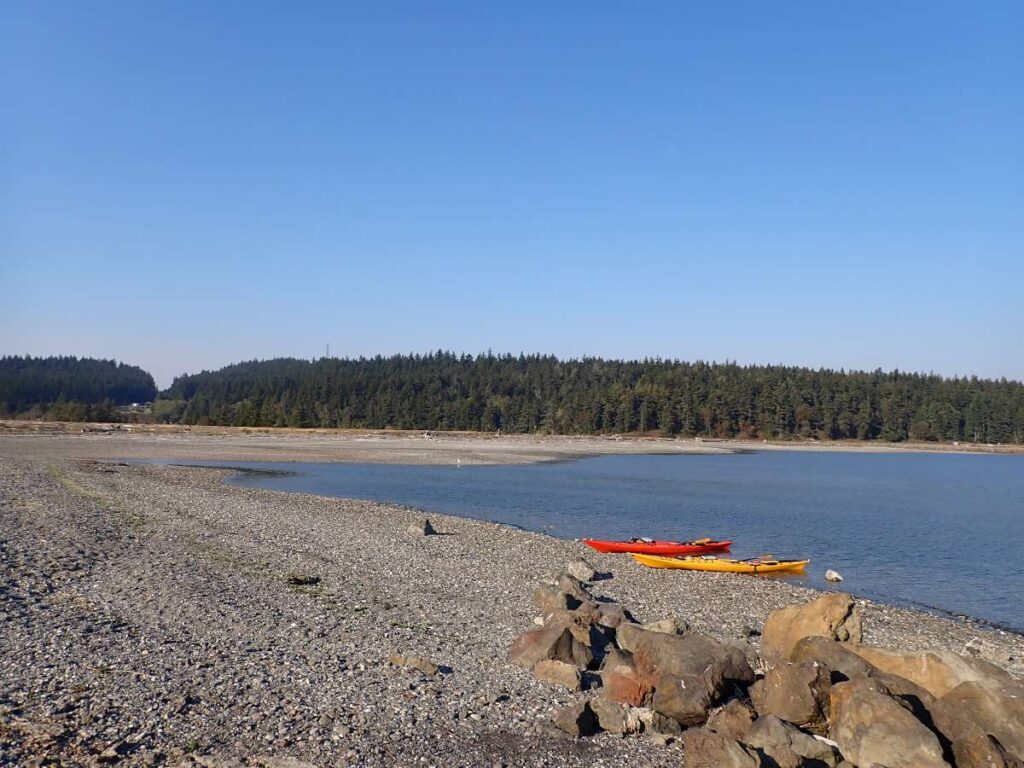
While we were preparing our dinner of couscous and pre-packaged lentil curry (a camping favorite), a family pulled up in a couple of large trucks and started making their own meal at another picnic table nearby. After a while, a number of them left their meals and headed towards the beach where three kayaks had appeared from around the corner of Indian Island. We watched with curiosity as the family came down to meet the paddlers. We later learned from the family that this was an annual event we were witnessing. Every year, a few of them launch these large, inflatable kayaks from Marrowstone Island, on the other side of Indian Island, and paddle over here to Oak Bay. It’s not a particularly long paddle – about five miles or so – but the fact that they use kayaks better suited for a swimming pool than Puget Sound makes the feet quite impressive. The family members, ranging from grand kids to grandparents, were all laughing and hugging each other, a warm and refreshing sight during the pandemic. They went back to their picnic table for dinner, the kayakers looking particularly interested in the potato salad and roasted chicken. One them, a father I presume, was walking next to a young boy who made involuntary jerks and loud shouts from time to time. His dad didn’t seem to care and held his son’s hand fondly as they made their way to dinner.
Gio and I were cleaning up from our meal when she noticed that one of their prized kayaks was floating away on the rising tide. “YOUR KAYAK!” she shouted and several of the adults ran over to beach. One got in a kayak that was still on shore and paddled out to rescue the errant one. They all thanked Giovannina for her good eye before going returning to their dinner. We went back to our chores. Shortly, an older gentleman, who we soon learned was the grandfather approached us with a reward.
“That kayak cost a hundred dollars when I bought it twenty years ago, and so I figure we owe you fifty dollars for helping us save it.”
We told him his gesture was very kind, but we couldn’t take his money. But he insisted, so I thought maybe there was something else we could do.
“Is there a group or organization that you regularly donate money to?” I asked.
“In fact there is,” he said. “My daughter-in-law is trying to build a playground for special needs children like my grandson. It’s called JUMP.”
“Well,” I said. “How about donating the money to that?”
“Excellent idea!”
By now his daughter-in-law had walked over to see what was going on. She was one of the paddlers and thanked us for helping rescue the kayak. She told us about the JUMP playground she had been working on and that they had raised over two hundred thousand dollars, and were about to present a proposal to the state for matching funds of up to five hundred thousand dollars. Due to the Covid pandemic, the presentation would be made via videoconference and she was feeling nervous. We reassured her that she would do just fine and hoped they’d get the funding. At the time of this writing, I can report that in fact the Jefferson Universal Movement Playground (JUMP) did receive a five hundred thousand dollar matching grant from the Washington State Recreation Conservation Office (RCO). I guess her presentation went pretty well.